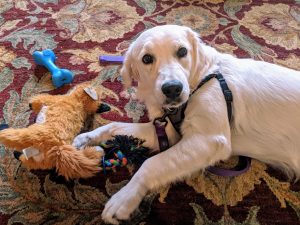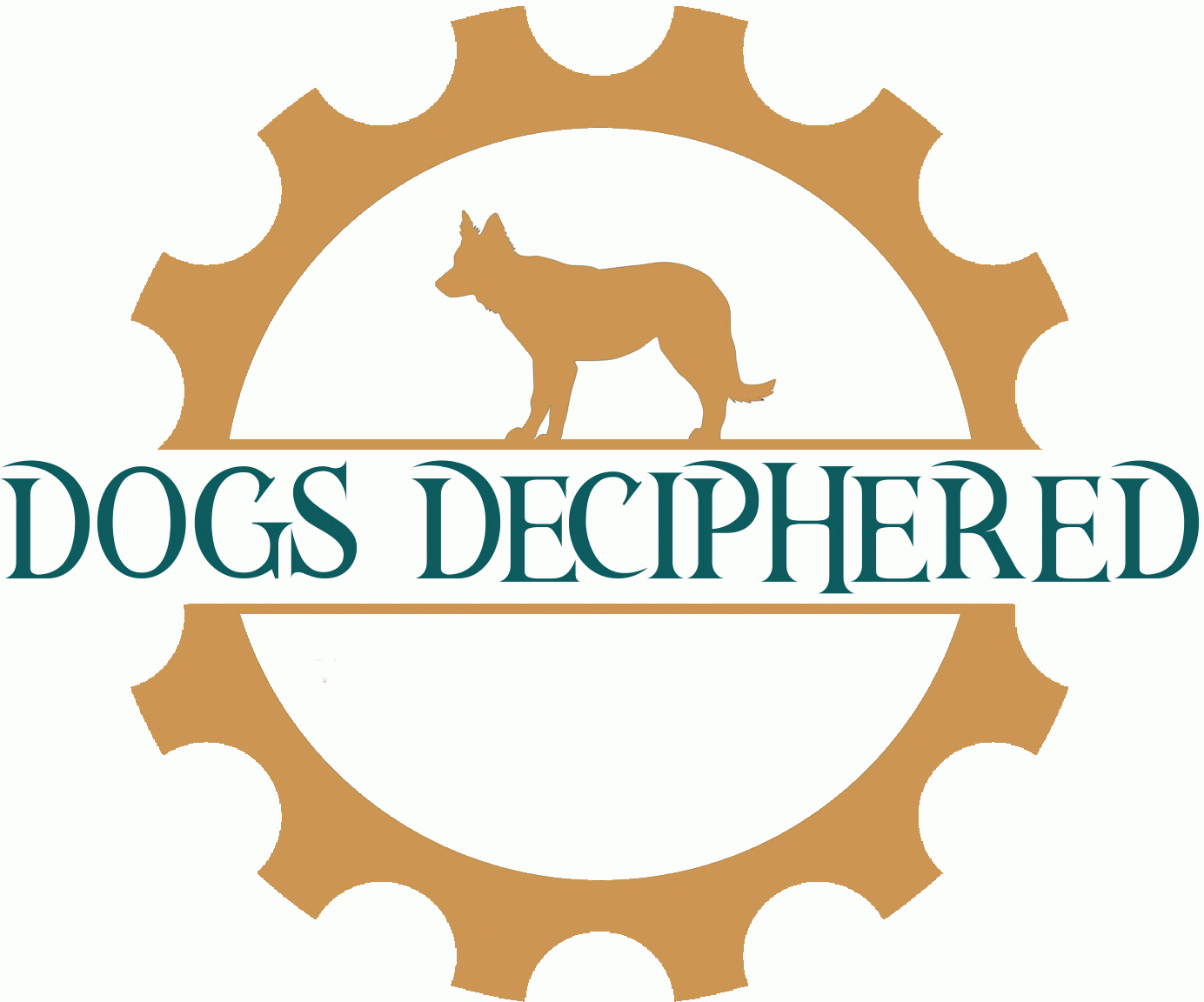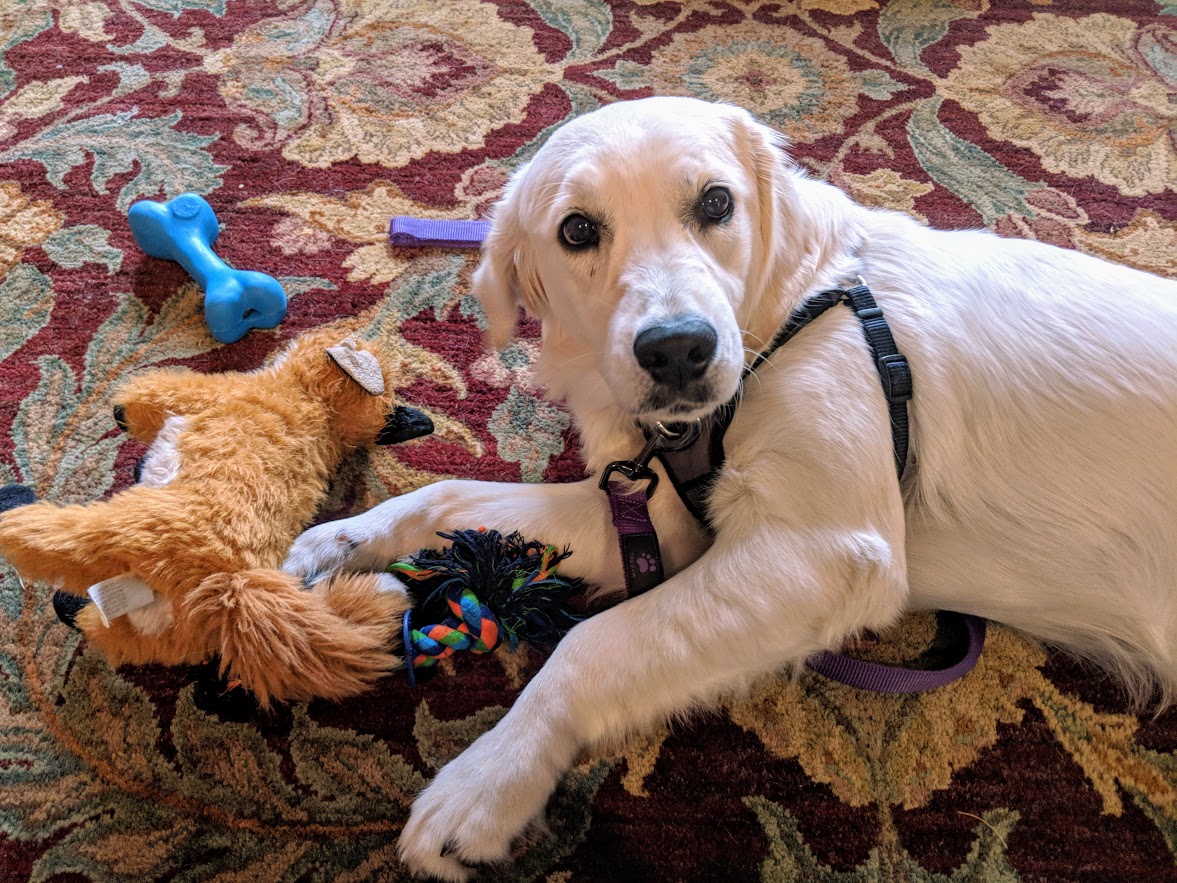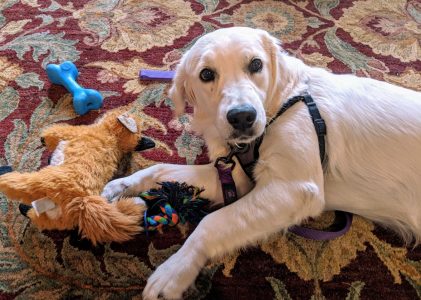If you have a dog between 6 and 18 months, you are living with a canine teenager. You’ve made it past your dog’s childhood, and it goes so very fast! It probably didn’t feel like it at the time, but from ages 8 weeks to 6 months, your dog has developed the equivalent of the first 11 or 12 years of a human child’s life. First there were the sleepless nights, learning what not to put in one’s mouth, and sharp puppy teeth. Then came the all too short but fun stage where your pup understands most of the rules of the house, and they are rapidly learning and exploring the world with wonder. Outings are filled with people flocking to meet your adorable puppy, who still thinks you are her universe, and will follow you around with adoring eyes. Then something starts to change, around 6 months old (give or take a month) most puppies start to feel the itch of independence. It starts, just like with a pre-teen child, with a little bit of sass. You notice that every once in a while, your sweet little puppy says “maybe I don’t want to!”. It’s here, and it’s time to buckle up because this is the time where the need for canine parenting is at an all time high.
You’re Not My Real Mom!
That’s what I call this stage of canine development – aka Canine Teenagehood. Typically, this comes on in full force around ages 8-9 months. As a canine parent, it’s important to give your young dog responsibility as it is earned, not as it is convenient.
What are dog responsibilities?
Freedom in all forms:
- Access to the house or yard unsupervised
- Off-leash access
- Unsupervised access to other pets
Behaving in public:
- Greeting people and dogs appropriately
- Quiet, calm behavior while walking
- Responding to your cues, not overly distracted
The freedom part can be a hard pill to swallow, especially if your pup was reliable when given that freedom before the age of 6 months. Some puppies will be responsible with these freedoms for a couple of months, but many will revert back to chewing, eliminating, or start new behaviors such as counter-surfing when unsupervised. You will likely need to take a step back in access to these freedoms during this stage.
Behaving in public can be particularly difficult for canine teens, because just months ago they were much smaller, cute puppies who everyone wanted to pet, and now they are closer to adult sized, and losing their puppyish features. When a dog who loves people has had unfettered access to attention in public now finds himself ignored by many, frustration is going to build. This awkward teen may throw himself toward people in public, making himself even less attractive to passersby. Without guidance this can become a very dramatic scene, an emotional outburst most difficult to reign in.
Survival Tactics

I think it’s important to realize that this is a developmental phase which is important for acquiring social skills, independence (a good thing in the right amounts), and a sense of their place in the world. You were once a teenager, and you might have raised teenagers, and I’m guessing you and your kids turned out to be pretty reasonable adults, and so will your dog.
Training is very important at this stage, because this is how you communicate to your dog how to behave in various circumstances. Hopefully you’ve already started training before this stage, and even if it feels like all of your previous work has gone out the window, it will come back. Sometimes you might have to go back to the beginning stages of a behavior you had previous taught, but I can assure you that you will make much faster progress than you did in the first learning phase. It’s not that your dog doesn’t remember the behavior, she’s not sure it’s worth it anymore. As a younger puppy, praise and petting might have been valuable enough to maintain a learned behavior, but now that doesn’t matter to her as much as checking out the neighbor dog through the fence. If you’ve recently adopted a canine teenager who hasn’t had previous training, go back to the very basics, as if you were dealing with a young puppy, and be sure that you have taught each behavior you are expecting of your dog.
Make training fun, and valuable to the dog, meaning that she can earn lots of her favorite reinforcers. Let your dog be herself sometimes, but maintain control over the access to those opportunities. Here are some examples of ways to give your dog controlled access to things she loves:
- Take her to the park to run, on a long line for safety, and reinforce her for checking in with you frequently.
- Ask a friend to practice polite greetings so that you can reinforce calm behavior before expecting her to do this with a stranger.
- If your canine teen is picking on an older dog in the family who isn’t into playing, find some appropriate canine playmates for your dog to play with in a controlled environment
- Note: I would avoid busy dog parks with a canine teen who is struggling with social interactions, as there is no control over the environment. Contact a professional trainer or well-run doggie daycare instead!
Only expose your dog to situations that he can emotionally handle. For many canine teens that might mean more limited exposure to certain environments that are emotionally harder to handle. Your job at this time is to help him make good decisions, and limit the opportunities to make bad decisions.
- If your dog struggles with greetings at the door, find ways to reduce their exposure to the situation, such as baby gates, putting the dog on a leash, or crating until the person is in the house.
- If he struggles with polite greetings in public, stay on the fringes of the park where he can watch people and dogs walk by without interacting, or stay outside the doors of the hardware or pet store and teach him to focus on you instead of lunging at people going inside.
- If he is being pushing toward your other dog at meal times, feed him in a crate, or behind a baby gate.
Remember, this too shall pass!
The onset, and passing of this phase of development will depend on the individual dog’s temperament, breed, sex, sexual status and other factors. As mentioned before I find for most dogs it really hits around 8-9 months, and has somewhat subsided around 16-18 months. Most dogs then enter young adulthood, which if you remember, still has plenty of room for bad decisions to be made! By around 2 years of age most dogs are much more socially aware, and can use their brains in more distracting environments (if that’s something you’ve worked on!). I’m sure that any parent who has raised a teenager has had the moment where they wonder “What happened to my sweet little child?”, and you will find yourself wondering the same about your pup at times. Keep telling yourself this is only a phase, and one of my favorite quotes “My dog is not giving me a hard time, she is having a hard time!”.


